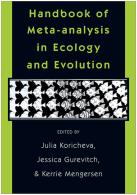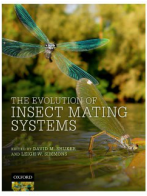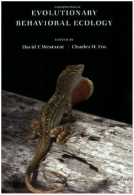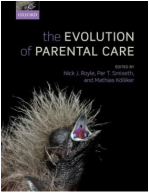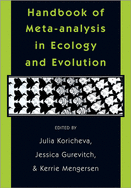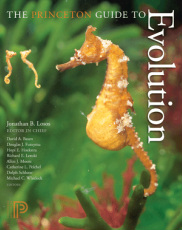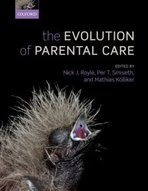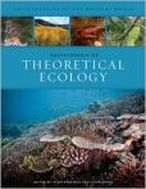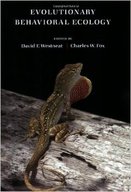Michael's publications
For citation info on most papers see Michael's Google Scholar Citations or Researcher ID. Book chapters are at the bottom of this page….
For citation info on most papers see Michael's Google Scholar Citations or Researcher ID. Book chapters are at the bottom of this page….
2024
|
230. Zang C, Chung MH, Neeman T, Harrison L, Vinogradov I, Jennions MD. 2024. Does losing reduce the tendency to engage with rivals to reach mates? An experimental test. Behavioral Ecology 35 (in press) DOI Link
|
|
229. Fromhage L, Jennions MD, Myllymaa L, Henshaw JM. 2024. Fitness as the organismal measure guiding adaptive evolution. Evolution (in press) DOI Link VIDEO for teaching
|
| ||||||
|
228. Macedo-Rego RC, Jennions MD, Santos ESA. 2024. Does the potential strength of sexual selection differ between mating systems with and without defensive behaviours? A meta-analysis. Biological Reviews of the Cambridge Philosophical Society (in press) DOI Link
|
| ||||||
|
227. Premate E, Fišer Z, Bíró A, Copilaş-Ciocianu D, Fromhage L, Jennions MD, Borko S, Herczeg G, Balázs G, Kralj-Fišer, Fišer C. 2024. Sexual dimorphism in subterranean amphipod crustaceans covaries with diversity of subterranean habitats. Journal of Evolutionary Biology (in press) DOI Link
|
| ||||||
|
226. Chung M-H, Head ML, Fox R, Jennions MD. 2024. Effects of past mating behavior versus past ejaculation on male mate choice and male attractiveness. Behavioral Ecology 35: 1-10 DOI Link
|
| ||||||
|
225. Crino OL, Head ML, Jennions MD, Noble DWA. 2024. Mitochondrial function and sexual selection: can physiology resolve the ‘lek paradox’? Journal of Experimental Biology 227: jeb245569 DOI Link
|
| ||||||
2023
|
224. Yang Y, Scahez-Tojar A, O'Dea RE, Noble DWA, Koricheva J, Jennions MD, Parker TH, Lagisz M, Nakagawa S. 2023. Publication bias impacts on effect size, statistical power, and magnitude (Type M) and sign (Type S) errors in ecology and evolutionary biology BMC Biology 21:71 DOI Link
|
| ||||||
|
223. Harrison L, Vega Trejo R, Jennions MD. 2023. The effect of brief or prolonged bouts of winning or losing male-male contests on plasticity in sexually selected traits. American Naturalist 201: 442-459 DOI Link
|
| ||||||
|
222. Chowdhury S, Jennions MD, Zalucki MP, Maron M, Watson JEM, Fuller RA. 2023. Protected areas and the future of insect conservation. Trends in Ecology and Evolution 38: 85-95 DOI Link
|
| ||||||
|
221. Kokko H, Jennions MD. 2023. Is more always better when it comes to mating? Public Library of Science, Biology 21: e3001955 DOI Link
|
| ||||||
|
220. Kappeler PM, Benhaiem S, Fichtel C, Fromhage L, Honner OP, Jennions MD, Kaiser S, Kruger O, Schneider JM, Tuni C, van Schaik J, Goymann W. 2023. Sex roles and sex ratios in animals. Biological Reviews of the Cambridge Philosophical Society 98:462-480 DOI Link
219. Fromhage L, Jennions MD. 2022. Assumptions. models and data: a comment on Richardson and Zuk. Behavioral Ecology 34: 185-186 DOI Link
|
| ||||||||||||
2022
|
218. Chowdhury S, Zalucki MP, Amano T, Poch TJ, Lin M-M, Ohwaki A, Lin D-L, Yang L, Choi S-W, Jennions MD, Fuller MD. 2023. Trends and Progress in Studying Butterfly Migration. Integrative Conservation 1: 8-24 DOI Link
|
| ||||||
|
217. Schacht R, Beissinger SR, Wedekind C, Jennions MD, Geffroy B, Liker A, Kappeler PM, Weissing FJ, Kramer KL, Hesketh T, Boissier, Uggla C, Hollingshaus M, Székely T. 2022. Adult sex ratios: causes of variation and implications for animal and human societies. Communications Biology 5:1273 DOI Link
|
| ||||||
|
216. Harrison L, Jennions MD. 2022. Revisiting and interpreting the role of female dominance in male mate choice: the importance of replication in ecology and evolution. Evolutionary Ecology 36: 933-974 DOI Link
|
| ||||||
|
215. Vinogradov IM. Jennions MD, Van Veen E, Fichtel C, Kappeler PM, Fox RJ. 2022. The effect of sex, age and boldness on inhibitory control. Animal Behaviour 193:133-143 DOI Link
|
| ||||||
|
214. Chen Y-Y, Jennions MD, Fox RJ. 2022. Foraging microhabitat preferences of inverticorous fishes within tropical macroalgal meadows: identification of canopy specialists. Coral Reefs 41: 511-522 DOI Link
|
| ||||||
|
213. Iglesias Carrasco M, Wong BMB, Jennions MD. 2022. In the Shadows: wildlife behaviour in tree plantations. Trends in Ecology and Evolution 37:838-850 DOI Link
|
| ||||||
| |||||||
|
211. Dougherty LR, Skirrow MJA, Jennions MD, Simmons LW. 2022. Male alternative reproductive tactics and sperm competition: A meta-analysis. Biological Reviews of the Cambridge Philosophical Society 97:1365-1388. DOI Link
|
| ||||||
|
210. Nakagawa S, Lagisz M, Jennions MD, Koricheva J, Noble DWA, Parker TH, Sánchez-Tójar A, Yang Y, O’Dea RE. 2022. Methods for testing publication bias in ecological and evolutionary meta-analyses. Methods in Ecology & Evolution 13:4-21 DOI Link Preprint
|
| ||||||
|
209. Harrison L, Noble D, Jennions MD. 2022. A meta-analysis of sex differences in animal personality: no evidence for the greater male variability hypothesis. Biological Reviews of the Cambridge Philosophical Society 97:679-707 DOI Link
|
| ||||||
2021
| |||||||
|
207. Premate E, Borko S, Kralj-Fišer S, Jennions MD, Fišer Z, Balázs G, Bíró A, Bračko G, Copilaş-Ciocianu D, Hrga N, Herczeg G, Rexhepi B, Zagmajster M, Zakšek V, Fromhage L, Fišer C. 2021. No room for males in caves: Female-biased sex ratio in subterranean amphipods of the genus Niphargus. Journal of Evolutionary Biology 34:1653-1661 DOI Link
|
| ||||||
|
206. Aich U, Head ML, Fox RJ, Jennions MD. 2021. Male age alone predicts paternity success under sperm competition when effects of age and past mating effort are experimentally separated. Proceedings of the Royal Society Series B 288:20210979 DOI Link
|
| ||||||
|
205. Chung M-HJ, Jennions MD, Fox RJ. 2021. Quantifying the costs of pre- and post-copulatory traits for males: evidence that costs of ejaculation are minor relative to mating effort. Evolution Letters 5:315-327 DOI Link
|
| ||||||
| |||||||
|
203. O’Dea RE, Lagisz M, Jennions MD, Koricheva J, Noble DWA, Parker TH, Gurevitch J, Page MJ, Stewart G, Moher D, Nakagawa S. 2021. Reporting items for systematic reviews and meta-analyses in ecology and evolutionary biology: a PRISMA extension. Biological Reviews of the Cambridge Philosophical Society 96: 1659-1672 DOI Link PrePrint Link to App etc
|
| ||||||
|
202. Vinogradov I, Jennions MD, Neeman T, Fox RJ. 2021. Repeatability of lateralisation in mosquitofish Gambusia holbrooki despite evidence for turn alternation in detour tests. Animal Cognition 24: 765-775 DOI Link
|
| ||||||
2020
|
201. Iglesias Carrasco M, Aich U, Jennions MD, Head ML. 2020. Stress in the city: meta-analysis indicates no overall evidence for stress in urban vertebrates. Proceedings of the Royal Society Series B 287:20201754 DOI Link
|
| ||||||
|
200. Iglesias Carrasco M, Harrison L, Jennions MD, Head ML. 2020. Combined effects of rearing and testing temperature on sperm traits. Journal of Evolutionary Biology 33:1715-1724 DOI Link
|
| ||||||
|
199. Aich U, Bonnet, T, Fox R, Jennions MD. 2020. Experimental test to separate the effects of male age and mating history on female mate choice. Behavioral Ecology. 31:1353-1360 DOI Link
|
| ||||||
|
198. Chung M-HJ, Fox RJ, Jennions MD. 2020. Fine-scale genital morphology affects male ejaculation success: an experimental test. Biology Letters 16:20200251 DOI Link
|
| ||||||
|
197. Spagopoulou F, Vega-Trejo R, Head ML, Jennions MD. 2020. Shifts in reproductive investment in response to competitors lowers male reproductive success. American Naturalist 196:355-368 DOI Link
|
| ||||||
|
196. Aich U, Jennions MD, Fox RJ. 2020. An experimental test of the role of male mating history on paternal effects in the liverbearer fish, Gambusia holbrooki. Biology Letters 16:20190945 DOI Link
|
| ||||||
2019
|
195. Chung M-HJ, Jennions MD, Fox RJ. 2019. Novel ablation technique shows no sperm priming response by male eastern mosquitofish to cues of female availability. Behavioral Ecology and Sociobiology 73:167 DOI Link
|
| ||||||
|
194. Iglesias Carrasco M, Fox RJ, Vega Trejo R, Jennions MD, Head ML. 2019. An experimental test for body size-dependent effects of male harassment and an elevated copulation rate on female fecundity and offspring performance. Journal of Evolutionary Biology 32:1262-1273 DOI Link
|
| ||||||
|
193. Fromhage L, Jennions MD. 2019. The strategic reference gene: an organismal theory of inclusive fitness. Proceedings of the Royal Society Series B 286: 20190459 DOI Link
Commentary by D Queller VIDEO (23 min) VIDEO of ESEB2019 Talk (10min) |
| ||||||
|
192. Iglesias-Carassco M, Jennions MD, Ho SYW, Duchene D. 2019. Sexual selection, body mass, and molecular evolution interact to predict diversification in birds. Proceedings of the Royal Society Series B 286:20190172 DOI Link
|
| ||||||
|
191. Johns S, Henshaw JM, Jennions MD, Head ML. 2019. Males can evolve lower resistance to sexually transmitted infections to infect their mates and thereby increase their own fitness. Evolutionary Ecology 33:149-172 DOI Link
|
| ||||||
|
190. Vega Trejo R, Fox RJ, Iglesias-Carrasco M, Head ML, Jennions MD. 2019. The effect of male age, sperm age and mating history on ejaculate senescence. Functional Ecology 33:1267-1279 DOI Link Commentary by Reinhardt & Turnell
|
| ||||||
|
189. Fox RJ, Head ML, Jennions MD. 2019. Disentangling the costs of male harassment and the benefits of polyandry for females. Behavioral Ecology. 30:872-881 DOI Link
|
| ||||||
|
188. Iglesias-Carrasco M, Fox RJ, Vincent A, Head ML, Jennions MD. 2019. No evidence that male sexual experience increases mating success in a coercive mating system Animal Behaviour 150:201-208 DOI Link
|
| ||||||
|
187. Chuard PJC, Vrtilek M, Head ML, Jennions MD. 2019. Evidence that non-significant results are sometimes preferred: reverse P-hacking or selective reporting? Public Library of Science, Biology 17:e3000127 DOI Link
|
| ||||||
|
186. Fox R, Fromhage L, Jennions MD. 2019. Sexual Selection, phenotypic plasticity and female reproductive output. Philosophical Transactions of the Royal Society, Series B 374:20180184 DOI Link
|
| ||||||
|
185. Fox R, Gearing E, Jennions MD, Head ML. 2019. Variation in the condition-dependence of sexual traits in the mosquitofish Gambusia holbrooki. Behavioral Ecology. 30:666-674 DOI Link
|
| ||||||
2018
|
184. O'Dea R, Lagisz M, Jennions MD, Nakagawa S. 2018. Gender differences in individual variation in academic grades fail to fit expected patterns for STEM. Nature Communications 9:3777 DOI Link
|
| ||||||
| |||||||
|
182. Vega Trejo L, Kruuk LEB, Jennions MD, Head ML. What happens to offspring when parents are inbred, old or have a poor start in life? Journal of Evolutionary Biology 38:1138-1151 DOI Link
|
| ||||||
|
181. Harrison LM, Jennions MD, Head ML. 2018. Does the winner-loser effect determine male mating success? Biology Letters 14: 20180195. DOI Link
|
| ||||||
|
180. Iglesias Carrasco M, Bilgin G, Jennions MD, Zajitschek S, Head ML. 2018. The fitness cost to females of exposure to males does not depend on water availability in seed beetles. Animal Behaviour 142:77-84 DOI Link
|
| ||||||
|
179. Iglesias Carrasco M, Jennions MD, Zajitschek S, Head ML. 2018. Are females in good condition better able to cope with costly males? Behavioral Ecology. 29:876-884 DOI Link
|
| ||||||
|
178. Mowles SL, Jennions MD, Backwell PRY. 2018. Robotic crabs reveal that female fiddler crabs are sensitive to changes in male display rate. Biology Letters 14: 20170695 DOI LInk
|
| ||||||
| |||||||
2017
| |||||||
|
175. Head ML, Kahn AT, Henshaw J, Keogh JS, Jennions MD. 2017.Sexual selection on male body size, genital length and heterozygosity: consistency across habitats and social settings. Journal of Animal Ecology 86:1458-1468 DOI Link
|
| ||||||
|
174. Jennions MD, Szekely T, Beissinger S, Kappeler P. 2017. Sex ratios. Current Biology 26: R790-792 DOI Link
|
| ||||||
|
173. Jennions MD, Fromhage L. 2017. Not all sex ratios are equal: the Fisher condition, parental care and sexual selection. Philosophical Transactions of the Royal Society Series B 20160312 DOI Link
|
| ||||||
|
172. Iglesias-Carrasco M, Head ML, Jennions MD, Cabido CC. 2017. Secondary compounds from exotic tree plantations change female mating preferences in the palmate newt (Lissotriton helveticus). Journal of Evolutionary Biology 30: 1788-1795 DOI Link
|
| ||||||
|
171. Iglesias-Carrasco M, Head ML, Jennions MD, Martin J, Cabido CC. 2017. Leaf extracts from an exotic tree affect responses to chemical cues in the palmate newt (Lissotriton helveticus). Animal Behaviour 127: 243-251 DOI Link
|
| ||||||
|
170. Mowles SL, Jennions MD, Backwell PRY. 2017. Multimodal communication in courting fiddler crabs reveals male performance capacities. Royal Society Open Science 4:1610933 DOI Link
|
| ||||||
|
169. Vega Trejo R, Head ML, Keogh JS, Jennions MD. 2017. Experimental evidence for sexual selection against inbred males. Journal of Animal Ecology 86:394-404 DOI Link
|
| ||||||
|
168. Booksmythe I, Mautz B, Davis J, Nakagawa S, Jennions MD. 2017. Facultative adjustment of the offspring sex ratio and male attractiveness: a systematic review and meta-analysis. Biological Reviews of the Cambridge Philosophical Society 92:108-134 DOI Link
|
| ||||||
2016
|
167. Vega Trejo R, Jennions MD, Head ML. 2016. Are sexually selected traits affected by a poor environment early in life? BMC Evolutionary Biology 16:263 DOI Link
|
| ||||||
|
166. Head ML, Jennions MD, Zajitschek S. 2016. Sexual selection: incorporating nongenetic inheritance" has been accepted for publication in Current Opinion in Behavioral Sciences 12: 129-137 DOI Link
|
| ||||||
|
165. Buechel SD, Booksmythe I, Kotrschal A, Jennions MD, Kolm N. 2016. Artificial selection on male genitalia length alters female brain size. Proceedings of the Royal Society Series B 283: 21061796 DOI Link
|
| ||||||
| |||||||
|
163. Fromhage L, Jennions MD. 2016. Coevolution of parental investment and sexually selected traits drives sex role divergence. Nature Communications 7:12517 DOI Link
|
| ||||||
|
162. Iglesias-Carrasco M, Head ML, Jennions MD, Cabido C. 2016. Condition-dependent trade-offs between sexual traits, body condition and immunity: the effect of novel habitats. BMC Evolutionary Biology 16: 135
|
| ||||||
|
161. Jennions MD. 2016. Graphical illustration of a potential problem: a commentary on Morrissey (2016). Journal of Evolutionary Biology 29: 1917-1918 DOI Link
|
| ||||||
|
160. Hayes CL, Callander S, Booksmythe I, Jennions MD, Backwell PRY. 2016. Mate choice and the operational sex ratio: an experimental test with robotic crabs. Journal of Evolutionary Biology 29: 1455-146 DOI Link
|
| ||||||
|
159. Booksmythe I, Head ML, Keogh JS, Jennions MD. 2016. Fitness consequences of artificial selection on relative male genital size. Nature Communications 7: 11597 DOI Link
|
| ||||||
|
158. Vega Trejo R, Head ML, Jennions MD. 2016. Inbreeding depression does not increase after exposure to a stressful environment: a test using compensatory growth. BMC Evolutionary Biology 16: 68 DOI Link
|
| ||||||
| |||||||
2015
|
156. Head ML, Vega Trejo R, Jacomb F, Jennions MD. 2015. Predictors of male insemination success in the mosquitofish (Gambusia holbrooki). Ecology and Evolution 5: 4999-5006 DOI Link
|
| ||||||
|
155. Fox R, Belwood DJ, Jennions MD. 2015. Why pair? Evidence of aggregative mating in a socially monogamous marine fish (Signatus doliatus, Siganidae). Royal Society Open Science 2: 150252 DOI Link
|
| ||||||
|
154. Kruuk L, Livingston J, Kahn AT, Jennions MD. 2015. Sex-specific maternal effects in a viviparous fish. Biology Letters 11: 20150472
|
| ||||||
|
153. Henshaw J, Kokko H, Jennions MD, 2015. Direct reciprocity stabilises simultaneous hermaphroditism at high mating rates: a model of sex allocation with egg trading and hermaphrodites. Evolution 69: 2129-2139
|
| ||||||
|
152. O'Dea R, Vega Trejo R, Head ML, Jennions MD. 2015. Maternal effects on offspring size and number in mosquitofish Gambusia holbrooki. Ecology and Evolution 5: 2945-2955
|
| ||||||
|
151. Holman L, Head ML, Lanfear R, Jennions MD. 2015. Evidence of experimental bias in the life sciences: why we need blind data recording. Public Library of Science, Biology 13(7): e1002190 DOI Link
|
| ||||||
|
150. Vega Trejo R, Head ML, Jennions MD. 2015. Evidence for inbreeding depression in a species with limited opportunities for maternal effects. Ecology and Evolution 7: 1389-1404
|
| ||||||
|
149. Head ML, Holman L, Lanfear R, Kahn AT, Jennions MD. 2015. The extent and consequences of P-hacking in science. Public Library of Science, Biology 13(3): e1002106 DOI Link
|
| ||||||
|
148. Kokko H, Jennions MD. 2015. Describing mate choice in a biased world. Behavioral Ecology 26: 320-321
|
| ||||||
|
147. Head ML, Jacomb F, Vega Trejo R, Jennions MD. 2015. Male mate choice and mating success under simultaneous versus sequential choice conditions. Animal Behaviour 103: 99-105.
|
| ||||||
|
146. Kahn AT, Jennions MD, Kokko H. 2015. Sex allocation, juvenile mortality, and the costs imposed by offspring on parents and siblings. Journal of Evolutionary Biology 28: 428-437.
|
| ||||||
|
145. Kokko H, Booksmythe I, Jennions MD. 2015. Mate sampling costs and sexy sons. Journal of Evolutionary Biology 28:259-266.
|
| ||||||
2014
|
144. O'Dea R, Jennions MD, Head ML. 2014. Male size and condition affects sperm number and production rates in mosquitofish Gambusia holbrooki. Journal of Evolutionary Biology 27: 2739-2744
|
| ||||||
|
143. Vega-Trejo R, O'Dea R, Jennions MD, Head ML. 2014. The effects of familiarity and mating experience on mate choice in mosquitofish, Gambusia holbrooki. Behavioural Ecology 25: 1205-1211.
|
| ||||||
|
142. Henshaw JM, Marshall DJ, Jennions MD, Kokko H. 2014. Local gamete competition explains sex allocation and fertilization strategies in the sea. American Naturalist 184:E32-E49.
|
| ||||||
|
141. Livingston J, Kahn AT, Jennions MD. 2014. Sex differences in compensatory and catch-up growth in the mosquitofish Gambusia holbrooki. Evolutionary Ecology 4:687-706.
|
| ||||||
|
140. Henshaw JM, Jennions MD, Kokko H. 2014. The economics of egg-trading: mating rate, sperm competition, and positive frequency-dependence. Dynamic Games and Applications 4:379-390.
|
| ||||||
|
139. Roche DG, Jennions MD, Binning SA. 2013. Data deposition: fees could damage public data archives. Nature 502:171
|
| ||||||
|
138. Roche DG, Lanfear R, Binning SA, Haff TM, Schwanz LE, Cain KE, Kokko H, Jennions MD, Kruuk LEB. 2014. Troubleshooting public data archiving: suggestions to increase participation. PLoS Biology 12:e1001779
|
| ||||||
2013
|
137. Kelly CD, Folinsbee K, Adams DC, Jennions MD. 2013. Intraspecific sexual size and shape dimorphism in an australian freshwater fish differs with respect to a biogeographic barrier and latitude. Evolutionary Biology 40:408-419
|
| ||||||
|
136. Callander S, Kahn AT, Hunt JC, Backwell PRY, Jennions MD. 2013. The effect of competitors on calling effort and lifespan in male field crickets. Behavioural Ecology 24:1251-1259
|
| ||||||
|
135. Roche DG., Binning SA., Strong LE., Davies J, Jennions MD. 2013. Increased behavioural lateralization in parasitized coral reef fish. Behavioral Ecology and Sociobiology 67:1339-1344
|
| ||||||
|
134. Mautz B, Møller A, Jennions MD. 2013. Do male secondary sexual characters signal ejaculate quality? A meta-analysis. Biological Reviews of the Cambridge Philosophical Society 88:669-682
|
| ||||||
|
133. Mautz BS, Wong BMB, Peters R, Jennions MD. 2013. Penis size interacts with body shape and height to influence male attractiveness. Proceedings of the National Academy of Sciences, U.S.A. 110:6925-6930. [Video Explanation]
|
| ||||||
|
132. Kahn AT, Kokko H, Jennions MD. 2013. Adaptive sex allocation in anticipation of changes in offspring mating opportunities. Nature Communications 4: Article 1603 doi:10.1038/ncomms2634
|
| ||||||
|
131. Kahn AT, Dolstra T, Jennions MD, Backwell PRY. 2013. Strategic male courtship effort varies in concert with adaptive shifts in female mating preferences. Behavioural Ecology 24:906-913.
|
| ||||||
|
130. Pitcher WR, Brooks RC, Jennions MD, Tregenza T, Dworkin I, Hunt J. 2013. Limited plasticity in the phenotypic variance-covariance matrix for male advertisement calls in the black field cricket Teleogryllus commodus. Journal of Evolutionary Biology 26:1060-1078.
|
| ||||||
|
129. Bolton J, Backwell PRY, Jennions MD. 2013. Density-dependence and fighting in species with indeterminate growth: a test in a fiddler crab. Animal Behaviour 85:1367-1376.
|
| ||||||
|
128. Callander S, Kahn AT, Maricic T, Jennions MD, Backwell PRY. 2013. Weapons or mating signals? Claw shape and mate choice in a fiddler crab. Behavioral Ecology and Sociobiology 67:1163-1167.
|
| ||||||
|
127. Callander S, Hayes C, Jennions MD, Backwell PRY. 2013. Experimental evidence that courting neighbours affect male attractiveness. Behavioural Ecology 24:730-733.
|
| ||||||
|
126. Hayes CL, Booksmythe I, Jennions MD, Backwell PRY. 2013. Does male reproductive effort increase with age? Courtship in fiddler crabs. Biology Letters 9(2) 20121078
|
| ||||||
|
125. Booksmythe I, Backwell PRY, Jennions MD. 2013. Competitor size, male mating success and mate choice in eastern mosquitofish (Gambusia holbrooki) Animal Behaviour 85:371-375
|
| ||||||
|
124. Drayton JM, Boeke JM, Jennions MD. 2013. Immune challenge on males and cryptic female choice in the cricket Teleogryllus commodus. Journal of Insect Behaviour 26:176-190
|
| ||||||
|
123. Kokko H, Booksmythe I, Jennions MD. 2013. Causality and sex roles: prejudice against patterns. Trends in Ecology and Evolution 28:2-4.
2012
|
| ||||||
|
122. Umbers KDL, Jennions MD, Gardner MG, Keogh JS. Twenty-five new polymorphic microsatellites for the eastern mosquitofish, Gambusia holbrooki (Actinopterygii : Poeciliidae), an invasive species in Australia. Australian Journal of Zoology 60:235-237
|
| ||||||
|
121. Kokko H, Klug H, Jennions MD. 2012. Unifying cornerstones of sexual selection: operational sex ratio, Bateman gradient, and the scope for competitive investment. Ecology Letters 15:1340-1351
|
| ||||||
|
120. Drayton JM, Hall MD, Hunt JC, Jennions MD. 2012. Sexual signaling and immune function in the black field cricket Teleogryllus commodus. PloSONE 7(7) e39631 DOI: 10.1371/journal.pone.0039631
|
| ||||||
|
119. Callander S, Bolton J, Jennions MD, Backwell PRY. 2012. A farewell to arms: males with regenerated claws fight harder over resources. Animal Behaviour 84:619-622
|
| ||||||
|
118. Jennions MD, Kahn AT, Kelly CD, Kokko H. 2012. Meta-analysis and sexual selection: past studies and future possibilities. Evolutionary Ecology 26:1119-1151
|
| ||||||
|
117. Slatyer R, Jennions MD, Backwell PRY. 2012. Polyandry occurs because females initially trade sex for protection. Animal Behaviour 83:1203-1206
|
| ||||||
|
116. Callander S, Backwell PRY, Jennions MD. 2012. Context-dependent male mate choice: the effects of competitor presence and competitor size. Behavioural Ecology 23:355-360
|
| ||||||
|
115. Callander S, Jennions MD, Backwell PRY. 2012. The effect of claw size and wave rate on female choice in a fiddler crab. Journal of Ethology 30:151-155
|
| ||||||
|
114. Kahn AT, Livingston JD, Jennions MD. 2012. Do females preferentially associate with males given a
better start in life? Biology Letters 8: 362-364 5 |
| ||||||
|
113. Booksmythe I, Hayes C, Jennions MD, Backwell PRY. 2012. The effects of neighbour familiarity and
size on cooperative defense of fiddler crab territories. Behavioural Ecology 23:285-289 |
| ||||||
|
112. Milner RNC, Jennions MD, Backwell PRY. 2012. Keeping up appearances: male fiddler crabs wave faster in a crowd. Biology Letters 8:176-178
|
| ||||||
|
111. Lehtonen J, Jennions MD, Kokko H. 2012. The many costs of sex. Trends in Ecology and Evolution
27:172-178 |
| ||||||
|
110. Jennions MD, Kokko H, Klug H. 2012. The opportunity to be misled in studies of sexual selection. Journal of Evolutionary Biology 25:591-598
|
| ||||||
|
109. Slatyer R, Mautz B, Backwell PRY, Jennions MD. 2012. Estimating genetic benefits of polyandry from experimental studies: a meta-analysis. Biological Reviews of the Cambridge Philosophical Society 87:1-33
|
| ||||||
2011
|
108. Bolton J, Callender S, Jennions MD, Backwell PRY. 2011. Even weak males help their neighbours: defence coallitions in a fiddler crab. Ethology 117:1027-1030
|
| ||||||
|
107. Callander S, Jennions MD, Backwell PRY. 2011. Female choice over short and long distances: neighbour effects. Behavioral Ecology and Sociobiology 65:2071-2078
|
| ||||||
|
106. Kelly CD, Jennions MD. 2011. Sexual selection and sperm quantity: meta-analyses of strategic ejaculation. Biological Reviews of the Cambridge Philosophical Society 86:863-884
|
| ||||||
|
105. Milner RNC, Jennions MD, Backwell PRY. 2011. Know thine enemy's neighbour: neighbour size affects floater's choice of whom to fight. Behavioural Ecology 22:947-950
|
| ||||||
|
104. Milner RNC, Jennions MD, Backwell PRY. 2011. Non-independent mate choice in a fiddler crab: a case of stimulus enhancement. Behavioral Ecology and Sociobiology 65:1419-1424
|
| ||||||
|
103. Mautz B, Jennions MD. 2011. The effect of competitor presence and relative competitive ability on male mate choice. Behavioural Ecology 22: 769-775
|
| ||||||
|
102. Drayton JM, Jennions MD. 2011. Inbreeding and measures of immune function in the cricket Teleogryllus commodus. Behavioural Ecology 22:486-492
|
| ||||||
|
101. Mautz B, Detto T, Wong BMB, Kokko H, Jennions MD, Backwell PRY. 2011. Male fiddler crabs defend multiple burrows to attract additional females. Behavioural Ecology 22:261-267
|
| ||||||
|
100. Booksmythe I, Jennions MD, Backwell PRY. 2011. Male fiddler crabs prefer conspecific females during simultaneous, but not sequential, mate choice. Animal Behaviour 81:775-778
|
| ||||||
|
99. Davidson A, Jennions MD, Nicotra AB. 2011. Do invasive species show higher phenotypic plasticity than native species, and is it adaptive? A meta-analysis. Ecology Letters 14:419-431
|
| ||||||
|
98. Drayton JM, Milner R, Hall M, Jennions MD. 2011. Inbreeding and courtship calling in the cricket Teleogryllus commodus. Journal of Evolutionary Biology 24:47-58
|
| ||||||
|
97. Reaney L, Drayton JM, Jennions MD. 2011. The role of body size and fighting experience in predicting contest behaviour in the black field cricket, Teleogryllus commodus. Behavioral Ecology and Sociobiology 65: 217-225
|
| ||||||
2010
|
96. Booksmythe I, Kokko H, Jennions MD. 2010. Sexual selection: the weevils of inbreeding. Current Biology 20: R672-R673
|
| ||||||
|
95. Booksmythe I, Jennions MD, Backwell PRY. 2010. Interspecific assistance: fiddler crabs help heterospecific neighbours in territory defence. Biology Letters 6:748-750
|
| ||||||
|
94. Milner RNC, Jennions MD, Backwell PRY. 2010. Eavesdropping in crabs: an agency for ladies detection. Biology Letters 6:755-757
|
| ||||||
|
93. Drayton JM, Milner RNC, Hunt J, Jennions MD. 2010. Inbreeding and advertisement calling in the cricket Teleogryllus commodus: laboratory and field experiments. Evolution 64:3069-3083
|
| ||||||
|
92. Kokko H, Jennions MD. 2010. Ways to raise tadpoles. Nature 464:990-991
|
| ||||||
|
91. Detto T, Jennions MD, Backwell PRY. 2010. When and why do territorial coalitions occur? Experimental evidence in a fiddler crab. American Naturalist 175:E119-125
|
| ||||||
|
90. Milner RNC, Booksmythe I, Jennions MD, Backwell PRY. 2010. The battle of the sexes? Territory acquisition and defence in male and female fiddler crabs. Animal Behaviour 79:735-738
|
| ||||||
|
89. Milner RNC, Detto T, Jennions MD, Backwell PRY. 2010. Experimental evidence for a seasonal shift in the strength of a female mating preference. Behavioural Ecology 21:311-316
|
| ||||||
|
88. Klug H, Heuschel J, Jennions MD, Kokko H. 2010. The mismeasurement of sexual selection. Journal of Evolutionary Biology 23:447-462
|
| ||||||
|
87. Booksmythe I, Jennions MD, Backwell PRY. 2010. Investigating the 'dear enemy' phenomenon in the territory defence of the fiddler crab, Uca mjoebergi . Animal Behaviour 79:419-423
|
| ||||||
|
86. Milner RNC, Jennions MD, Backwell PRY. 2010. Safe sex: male-female coalitions and pre-copulatory mate guarding in a fiddler crab. Biology Letters 6:180-182
|
| ||||||
|
85. Booksmythe I, Milner RNC, Jennions MD, Backwell PRY. 2010. How do weaponless male fiddler crabs avoid aggression? Behavioral Ecology and Sociobiology 64:485-491
|
| ||||||
|
84. Kahn A, Mautz B, Jennions MD. 2010. Females prefer to associate with males with longer intromittent organs in mosquitofish. Biology Letters 6:55-58
|
| ||||||
|
83. Milner RNC, Detto T, Jennions MD, Backwell PRY. 2010. Hunting and predation in a fiddler crab. Journal of Ethology 28:171-173
|
| ||||||
|
82. Murai M, Backwell PRY, Jennions MD. 2009. The cost of reliable signalling: experimental evidence for predictable variation among males in a cost-benefit trade off between sexually selected traits. Evolution 63:2363-2371
|
| ||||||
2009
|
81. Milner R, Jennions MD, Backwell PRY. 2008. Does the environmental context of a signalling male influence his attractiveness? Animal Behaviour 76:1565-1570
|
| ||||||
|
80. Kelly CD, Jennions MD. 2009. Sexually dimorphic immune response in the harem polygynous Wellington tree weta Hemideina crassidens. Physiological Entomology 34:174-179
|
| ||||||
|
79. Zajitschek F, Hunt J, Jennions MD, Hall M, Brooks RC. 2009. Effects of juvenile and adult diet on ageing and reproductive effort of male and female Black Field Crickets Teleogryllus commodus. Functional Ecology 23:602-611
|
| ||||||
2008
|
78. Kokko H, Jennions MD. 2008. Parental investment, sexual selection and sex ratios. Journal of Evolutionary Biology 21:919-948
|
| ||||||
|
77. Reaney LT, Sims RA, Sims SWM, Jennions MD, Backwell PRY. 2008. Experiments with robots explain synchronized courtship in fiddler crabs. Current Biology 18:R62-R63
|
| ||||||
|
76. Kokko H, Jennions MD. 2008. Sexual conflict: the battle of the sexes reversed. Current Biology 18:R121-R123
|
| ||||||
|
75. Bussière LF, Hunt J, Stölting KN, Jennions MD, Brooks R. 2008. Mate choice for genetic quality when environments vary: suggestions for empirical progress. Genetica 134:69-78
|
| ||||||
|
74. Fayed SA, Jennions MD, Backwell PRY. 2008. What factors contribute to an ownership advantage? Biology Letters 4:143-145
|
| ||||||
|
73. Hunt J, Blows MW, Zajitschek F, Jennions MD, Brooks R. 2007. Reconciling strong stabilising selection with the maintenance of genetic variation in a natural population of black field crickets (Teleogryllus commodus). Genetics 177:875-880
|
| ||||||
2007
|
72. Backwell PRY, Matsumasa M, Double M, Roberts A, Murai M, Keogh JS, Jennions MD. 2007. What are the consequences of being left clawed in a predominantly right clawed fiddler crab? Proceedings of the Royal Society Series B 274:2723-2729
|
| ||||||
|
71. Kokko H, Jennions MD, Houde AE. 2007. Evolution of frequency-dependent mate choice: keeping up with fashion trends. Proceedings of the Royal Society Series B 274:1317-1324
|
| ||||||
|
70. Jennions MD, Drayton J, Brooks RC, Hunt J. 2007. Do female black field crickets Teleogryllus commodus benefit from polyandry? Journal of Evolutionary Biology 20:1469-1477
|
| ||||||
|
69. Drayton J, Hunt J, Brooks R, Jennions MD. 2007. Sounds different: inbreeding depression in sexually selected traits in the field cricket Teleogryllus bimaculatus. Journal of Evolutionary Biology 20:1138-1147
|
| ||||||
|
68. Zajitschek F, Hunt J, Zajitschek SR, Jennions MD, Brooks R. 2007. No Intra-Locus sexual conflict over reproductive fitness or ageing in field crickets. PLoS ONE 2(1):e155
|
| ||||||
|
67. Fisher DO. Double MC, Blomberg SP, Jennions MD, Cockburn. 2006. Post-mating sexual selection increases lifetime fitness of polyandrous females in the wild. Nature 444:89-92
|
| ||||||
2006
|
66. Pandolfi JM, Tudhope A, Burr G, Chappell J, Edinger E, Frey M, Steneck R, Sharma C, Yeates A, Jennions MD, Lescinsky H, Newton A. 2006. Mass mortality following disturbance in Holocene coral reefs from Papua New Guinea. Geology 34:949-952
|
| ||||||
|
65. Hunt , Jennions MD, Spyrou N, Brooks R. 2006. Artificial selection on male longevity influences age-dependent reproductive effort in the black field cricket, Teleogryllus commodus. American Naturalist 168:E72-E86
|
| ||||||
|
64. Kokko H, Jennions MD, Brooks R. 2006. Unifying and testing models of sexual selection. Annual Reviews of Ecology, Evolution and Systematics 37:43-66
|
| ||||||
|
63. Jennions MD, Wong BMB, Cowling A., Donnelly C. 2006. Life history phenotypes in a live-bearing fish Brachyrhaphis episcopi living under different predator regimes: seasonal effects? Environmental Biology of Fish 76:211-219
|
| ||||||
|
62. Bussière LF, Hunt J, Jennions MD, Brooks R. 2006. Sexual conflict and cryptic female choice in the black field cricket,Teleogryllus commodus. Evolution 60:792-800
|
| ||||||
|
61. Backwell PRY, Jennions MD, Wada K, Murai M, Christy J. 2006. Synchronous waving in two species of fiddler crabs. Acta Ethologica 9:22-25
|
| ||||||
|
60. Kelly CD, Jennions MD. 2006. The h-index and career assessment by numbers. Trends in Ecology and Evolution 21:167-170
|
| ||||||
|
59. Bentsen, CL, Hunt J , Jennions MD, Brooks R. 2006. Complex multivariate sexual selection on male acoustic signalling in a wild population of Teleogryllus commodus. American Naturalist 167:E102-E116
|
| ||||||
2005
|
58. Hunt J, Brooks R, Jennions MD. 2005. Female mate choice as a condition-dependent life history trait. American Naturalist 166: 79-92
|
| ||||||
|
57. Brooks R, Hunt J, Blows MW, Smith MJ, Bussière LF, Jennions MD. 2005. Experimental evidence for multivariate stabilizing sexual selection. Evolution 59:871-880
|
| ||||||
|
56. Shackleton M, Jennions MD, Hunt J. 2005. Fighting success and attractiveness as predictors of male mating success in the black field cricket Teleogryllus commodus: the effectiveness of no-choice tests. Behavioral Ecology and Sociobiology 58:1-8
|
| ||||||
|
55. Torres-Vila LM, Jennions MD. 2005. Male mating history and female fecundity in the Lepidoptera: do male virgins make better partners? Behavioral Ecology and Sociobiology 57:318-326
|
| ||||||
|
54. Head ML, Hunt, J, Jennions MD, Brooks RC. 2005. The indirect benefits of mating with attractive males outweigh the direct costs. Public Library of Science, Biology 3:289-294
|
| ||||||
|
53. Savage KE, Hunt J, Jennions MD, Brooks RC. 2005. Male attractiveness covaries with fighting ability but not prior fight outcome in house crickets. Behavioural Ecology 16:196-200
|
| ||||||
2004
|
52. Hunt J, Brooks R, Jennions MD, Smith MJ, Bentsen CL, Bussière LF. 2004. High- quality male field crickets invest heavily in sexual display but die young. Nature 432:1024-1027
|
| ||||||
|
51. Jennions MD, Hunt J, Graham R, Brooks RC. 2004. No evidence for inbreeding avoidance through post-copulatory mechanisms in the black field cricket Teleogryllus commodus. Evolution 58:2472-2477
|
| ||||||
|
50. Backwell PRY, Jennions MD. 2004. Coalition among male fiddler crabs. Nature 430:417
|
| ||||||
|
49. Hunt J, Bussiere L, Jennions MD, Brooks RC 2004. What is genetic quality? Trends in Ecology and Evolution 19:329-333
|
| ||||||
|
48. Wong BMB, Jennions MD, Keogh JS, 2004. Sequential male mate choice in a fish, the Pacific blue-eye Pseudomugil signifer. Behavioral Ecology and Sociobiology 56:253-256
|
| ||||||
|
47. Torres-Vila LM, Rodríguez-Molina MC, Jennions MD. 2004. Polyandry and fecundity in the Lepidoptera: can methodological and conceptual approaches bias outcomes? Behavioral Ecology and Sociobiology 55:315-324
|
| ||||||
|
46. Wong BMB, Keogh JS, Jennions MD. 2004. Mate recognition in a freshwater fish: geographic distance,genetic differentiation, and variation in female preference for local over foreign males. Journal of Evolutionary Biology 17:701-708
|
| ||||||
|
45. Jennions MD, Møller AP, Hunt, J. 2004. Meta-analysis can "fail": reply to Kotiaho & Tomkins. Oikos 104:191-193
|
| ||||||
|
44. Brooks R, Bussiere L, Jennions MD, Hunt J. 2004. Sinister strategies succeed at the Cricket World Cup. Proceedings of the Royal Society Series B (Supplement), Biology Letters 271:S64-66
|
| ||||||
2003
|
43. Wong BMB, Jennions MD. 2003. Costs influence male mate choice in a freshwater fish. Proceedings of the Royal Society Series B (Supplement) 270:S36-S38
|
| ||||||
|
42. Kokko H, Jennions MD. 2003. It takes two to tango. Trends in Ecology and Evolution 18:103-104
|
| ||||||
|
41. Jennions MD, Backwell PRY, Murai M, Christy JH. 2003. Hiding behaviour in fiddler crabs: how long should prey hide in response to a potential predator. Animal Behaviour 66:251-257
|
| ||||||
|
40. Kokko H, Brooks R, Jennions MD, Morely J. 2003. The evolution of mate choice and mating biases. Proceedings of the Royal Society Series B 270:653-664
|
| ||||||
|
39. Jennions MD, Møller AP. 2003. A survey of the statistical power of research in behavioral ecology and animal behaviour. Behavioural Ecology 14:438-455
|
| ||||||
2002
|
38. Møller AP, Jennions MD. 2002. How much variation can be explained by ecologists and evolutionary biologists? Oecologia132:492-500
|
| ||||||
|
37. Jennions MD, Telford SR. 2002. Life-history phenotypes in populations of Brachyrhaphis episcopi (Poeciliidae) with different predator communities. Oecologia 132:44-50
|
| ||||||
|
36. Jennions MD, Møller AP. 2002. Publication bias in ecology and evolution: an empirical assessment using the “trim and fill” method. Biological Reviews of the Cambridge Philosophical Society 77:211-222
|
| ||||||
|
35. Jennions MD, Kelly CD. 2002. Geographic variation in male genitalia in Brachyrhaphis episcopi (Poecillidae): is it sexually or naturally selected? Oikos 97:79-86
|
| ||||||
|
34. Vélez M, Jennions MD, Telford SR. 2002. The effect of an experimental brood reduction on male desertion in the Panamanian Blue Acara Cichlid, Aequidens coeruleopunctatus. Ethology 108:331-340
|
| ||||||
|
33. Jennions MD, Møller AP. 2002. Relationships fade with time: a meta-analysis of temporal trends in publication in ecology and evolution. Proceedings of the Royal Society Series B 269:43-48
|
| ||||||
2000-2001
|
31. Jennions MD, Møller AP, Petrie M. 2001. Sexually-selected traits and adult survival: a meta-analysis. Quarterly Review of Biology 76:3-36
|
| ||||||
|
32. Møller AP, Jennions MD. 2001. How important are direct fitness benefits of sexual selection. Naturwissenschaften 88:401-415
|
| ||||||
|
30. Møller AP, Jennions MD. 2001. Testing and adjusting for publication bias. Trends in Ecology and Evolution 16:580-586
|
| ||||||
|
29. Jennions MD, Polakow D. 2001. The effect of partial brood loss on male desertion in a cichlid fish: an experimental test. Behavioural Ecology 12:84-92
|
| ||||||
|
28. Jennions MD, Brooks R. 2001. A sense of history. Trends in Ecology and Evolution 16:113-115
|
| ||||||
|
27. Oliveira RF & 22 others. 2000. Considerations on the use of video playbacks as visual stimuli: the Lisbon workshop consensus. Acta Ethologica 3:61-65
|
| ||||||
|
26. Jennions MD, Petrie M. 2000. Why do females mate multiply? A review of the genetic benefits. Biological Reviews of the Cambridge Philosophical Society 75:21-64
|
| ||||||
|
1998-1999
25. Backwell PRY, Christy JH, Telford SR, Jennions MD, Passmore NI. 2000. Dishonest signaling in a fiddler crab. Proceedings of the Royal Society Series B 267:719-724
|
| ||||||
|
24. Brooks R, Jennions MD. 1999. The dark side of sexual selection. Trends in Ecology and Evolution 14:336-337
|
| ||||||
|
23. Backwell PRY, Jennions MD, Passmore NI, Christy JH. 1999. Female choice in the synchronously waving fiddler crab, Uca annulipes. Ethology 105:415-422
|
| ||||||
|
22. Jennions MD, Backwell PRY. 1998. Variation in courtship rate in the fiddler crab Uca annulipes: is it related to male attractiveness? Behavioural Ecology 9:605-611
|
| ||||||
|
21. Jennions MD. 1998. Tibial coloration, fluctuating asymmetry and female choice behaviour in the damselfly Platycypha caligata. Animal Behaviour 55:1517-1528
|
| ||||||
|
20. Jennions MD. 1998. The effect of leg band symmetry on female-male association in zebra finches. Animal Behaviour 55:61-67
|
| ||||||
|
19. Telford SR, Jennions MD. 1998. Establishing cryptic female choice in animals. Trends in Ecology and Evolution 13:216-218
|
| ||||||
|
18. Koga T, Backwell PRY, Jennions MD, Christy JH. 1998. Elevated predation risk changes mating behaviour and courtship in a fiddler crab Uca beebei. Proceedings of the Royal Society Series B 265:1385-1390
|
| ||||||
|
17. Backwell PRY, Jennions MD, Passmore NI, Christy JH. 1998. Synchronized courtship in fiddler crabs. Nature 391:31-32
|
| ||||||
1995-1997
|
16. Jennions MD. 1997. Female promiscuity and genetic incompatability. Trends in Ecology and Evolution 12:251-253
|
| ||||||
|
15. Jennions MD. 1997. Stability in coral communities: a natural experiment. Trends in Ecology and Evolution 12:3-4
|
| ||||||
|
14. Jennions MD & Petrie, M. 1997. Variation in mate choice and mating preferences: a review of causes and consequences. Biological Reviews of the Cambridge Philosophical Society 72:283-327
|
| ||||||
|
13. Jennions MD. 1996. The allometry of fluctuating asymmetry in southern African plants: flowers and leaves. Biological Journal of the Linnean Society 59:127-142
|
| ||||||
|
12. Jennions MD & Backwell PRY. 1996. Residency and size affect fight duration and outcome in the fiddler crab, Uca annulipes. Biological Journal of the Linnean Society 57:293-306
|
| ||||||
|
11. Jennions MD, Bishop PJ, Backwell PRY, Passmore, NI. 1995. Call rate variability and female choice in the African frog, Hyperolius marmoratus. Behaviour 132:709-720
|
| ||||||
|
10. Jennions MD, Backwell PRY, Passmore NI. 1995. Repeatability of mate choice: the effect of size in the African painted reed frog, Hyperolius marmoratus. Animal Behaviour 49:181-186
|
| ||||||
|
9. Backwell PRY, Jennions MD, Christy J & Schobe U. 1995. Pillar-building in the fiddler crab Uca beebei: evidence for a condition-dependent ornament. Behavioral Ecology and Sociobiology 36:185-192
|
| ||||||
|
8. Bishop PJ, Jennions MD, Passmore NI. 1995. Chorus size and call intensity: female choice in the painted reed frog, Hyperolius marmoratus. Behaviour 132:721-731
|
| ||||||
|
7. Polakow D, Backwell PRY, Caithness N, Jennions MD. 1995. Stabilising or directional selection in signalling systems: investigations in a population of painted reed frogs, Hyperolius marmoratus. South African Journal of Science 91:270-271
|
| ||||||
1992-94
|
6. Jennions MD, Macdonald DW. 1994. Cooperative breeding in mammals. Trends in Ecology and Evolution 9:89-93
|
| ||||||
|
5. Jennions MD. 1993. Female choice in birds and the cost of long tails. Trends in Ecology and Evolution 8:230-232
|
| ||||||
|
4. Jennions MD, Passmore NI. 1993. Sperm competition in frogs: testis size and a ‘sterile male’ experiment on Chiromantis xerampelina (Rhacophoridae). Biological Journal of the Linnean Society 50:211-220
|
| ||||||
|
3. Backwell PRY, Jennions MD. 1993. Mate choice in the Neotropical frog, Hyla ebraccata: sexual selection, mate recognition and signal selection. Animal Behaviour 45:1248-1250
|
| ||||||
|
2. Jennions MD, Backwell PRY, Passmore NI. 1992. Breeding behaviour of the African frog, Chiromantis xerampelina: multiple spawning and polyandry. Animal Behaviour 44:1091-1100
|
| ||||||
|
1. Jennions MD, Backwell PRY. 1992. Chorus size influences on the anti-predator behaviour of a Neotropical frog. Animal Behaviour 44:990-992
|
| ||||||
Book Chapters
17. Kelly CD, Jennions MD. 2017. Sperm competition theory. In Encyclopeadia of Evolutionary Psychological Science (EDs TK Shackelford, VA Weeks-Schakelford) Springer International.
16. Kokko H, Jennions MD. 2014. The relationship between sexual selection and sexual conflict. pp 23-36. In Sexual Conflict (Edited by S Gavrilets, WR Rice) Cold Spring Harbour Press.
15. Kokko H, Klug H, Jennions MD. 2014. Mating systems. pp 42-58. In The Evolution of Insect Mating Systems
(Edited by DM Shuker, LW Simmons) Oxford University Press: Oxford.
14. Jennions MD, Kokko H. 2014. Mate Choice in the online resource: Oxford Bibliographies in Evolutionary Biology.
Unfortunately, you can not access this unless your library subscribes. Sorry!
(An annotated list of about 150 papers with links to PDFs. There are short introductory pieces on many aspects of mate choice)
13. Jennions MD, Kokko H. 2013. Sexual selection: Mate choice. In J Losos, D Baum, D Futuyma, H Hoekstra, R Lenski, A Moore, D Schluter, M Whitlock (Eds) pp 647-654. The Princeton Guide to Evolution. Princeton University Press, Princeton.
The next 8 chapters in: Handbook of Meta-analysis in Ecology and Evolution. Edited by J Koricheva, J Gurevitch & K Mengersen.
Princeton University Press, Princeton BUY HERE
12. Cote I, Jennions MD. 2013. Chapter 2: The Procedure of meta-analysis in a nutshell In: J Koricheva, J Gurevitch, K Mengersen (Eds) Handbook of Meta-analysis in Ecology and Evolution, pp. 14-24, Princeton University Press, Princeton
11. Mengersen K, Schmid CH, Jennions MD, Gurevitch J. 2013. Chapter 8: Statistical models and approaches to inference. In: J Koricheva, J Gurevitch, K Mengersen (Eds) Handbook of Meta-analysis in Ecology and Evolution, pp. 89-107, Princeton University Press, Princeton
10. Jennions MD, Lortie C, Rosenberg MS, Rothstein HR. 2013. Chapter 14: Publication and related biases In: J Koricheva, J Gurevitch, K Mengersen (Eds) Handbook of Meta-analysis in Ecology and Evolution, pp. 207-236, Princeton University Press, Princeton
9. Koricheva J, Jennions MD, Lau J. 2013. Chapter 15: Temporal trends in effect sizes: causes, detection and implication. In: J Koricheva, J Gurevitch, K Mengersen (Eds) Handbook of Meta-analysis in Ecology and Evolution, pp. 237-254, Princeton University Press, Princeton
8 Mengersen K, Jennions MD, Schmid CH. 2013. Chapter 16: Statistical models for the meta-analysis of non-independent data. In: J Koricheva, J Gurevitch, K Mengersen (Eds) Handbook of Meta-analysis in Ecology and Evolution, pp. 255-283, Princeton University Press, Princeton
7 Lajeunesse M, Jennions MD, Rosenberg M. 2013. Chapter 17: Phylogenetic non-independence and meta-analysis. In: J Koricheva, J Gurevitch, K Mengersen (Eds) Handbook of Meta-analysis in Ecology and Evolution, pp. 284-299, Princeton University Press, Princeton
6. Jennions MD, Lortie C, Koricheva J. 2013. Chapter 23: Role of meta-analysis in interpreting the scientific literature. In: J Koricheva, J Gurevitch, K Mengersen (Eds) Handbook of Meta-analysis in Ecology and Evolution, pp. 364-380, Princeton University Press, Princeton
5. Jennions MD, Lortie C, Koricheva J. 2013. Chapter 24: Using meta-analysis to test ecological and evolutionary theory. In: J Koricheva, J Gurevitch, K Mengersen (Eds) Handbook of Meta-analysis in Ecology and Evolution, pp.381-403. Princeton University Press, Princeton
4. Kokko H, Jennions MD. 2012. Sex differences in parental care. In N Royle, PT Smiseth, M Kölliker (Eds). pp. 101-116.The Evolution of Parental Care. Oxford University Press, Oxford.
3. Jennions MD, Mengersen K. 2012. Meta-analysis. In: Hastings A & Gross L (Eds) Encyclopedia of Theoretical Ecology. pp 423-426. University of California Press.
2. Jennions MD, Kokko H. 2010. Sexual selection. In DF Westneat & CW Fox (Eds) Evolutionary Behavioural Ecology, pp343-364, Oxford University Press, Oxford.
1. Kokko H, Jennions MD. 2010. Behavioral ecology: the natural history of evolutionary theory. In: Bell MA, Eanes WF, Futuyma DJ, Levinton JS (Eds) Evolution After Darwin: the First 150 Years. Sinaeur Publishing.
17. Kelly CD, Jennions MD. 2017. Sperm competition theory. In Encyclopeadia of Evolutionary Psychological Science (EDs TK Shackelford, VA Weeks-Schakelford) Springer International.
16. Kokko H, Jennions MD. 2014. The relationship between sexual selection and sexual conflict. pp 23-36. In Sexual Conflict (Edited by S Gavrilets, WR Rice) Cold Spring Harbour Press.
15. Kokko H, Klug H, Jennions MD. 2014. Mating systems. pp 42-58. In The Evolution of Insect Mating Systems
(Edited by DM Shuker, LW Simmons) Oxford University Press: Oxford.
14. Jennions MD, Kokko H. 2014. Mate Choice in the online resource: Oxford Bibliographies in Evolutionary Biology.
Unfortunately, you can not access this unless your library subscribes. Sorry!
(An annotated list of about 150 papers with links to PDFs. There are short introductory pieces on many aspects of mate choice)
13. Jennions MD, Kokko H. 2013. Sexual selection: Mate choice. In J Losos, D Baum, D Futuyma, H Hoekstra, R Lenski, A Moore, D Schluter, M Whitlock (Eds) pp 647-654. The Princeton Guide to Evolution. Princeton University Press, Princeton.
The next 8 chapters in: Handbook of Meta-analysis in Ecology and Evolution. Edited by J Koricheva, J Gurevitch & K Mengersen.
Princeton University Press, Princeton BUY HERE
12. Cote I, Jennions MD. 2013. Chapter 2: The Procedure of meta-analysis in a nutshell In: J Koricheva, J Gurevitch, K Mengersen (Eds) Handbook of Meta-analysis in Ecology and Evolution, pp. 14-24, Princeton University Press, Princeton
11. Mengersen K, Schmid CH, Jennions MD, Gurevitch J. 2013. Chapter 8: Statistical models and approaches to inference. In: J Koricheva, J Gurevitch, K Mengersen (Eds) Handbook of Meta-analysis in Ecology and Evolution, pp. 89-107, Princeton University Press, Princeton
10. Jennions MD, Lortie C, Rosenberg MS, Rothstein HR. 2013. Chapter 14: Publication and related biases In: J Koricheva, J Gurevitch, K Mengersen (Eds) Handbook of Meta-analysis in Ecology and Evolution, pp. 207-236, Princeton University Press, Princeton
9. Koricheva J, Jennions MD, Lau J. 2013. Chapter 15: Temporal trends in effect sizes: causes, detection and implication. In: J Koricheva, J Gurevitch, K Mengersen (Eds) Handbook of Meta-analysis in Ecology and Evolution, pp. 237-254, Princeton University Press, Princeton
8 Mengersen K, Jennions MD, Schmid CH. 2013. Chapter 16: Statistical models for the meta-analysis of non-independent data. In: J Koricheva, J Gurevitch, K Mengersen (Eds) Handbook of Meta-analysis in Ecology and Evolution, pp. 255-283, Princeton University Press, Princeton
7 Lajeunesse M, Jennions MD, Rosenberg M. 2013. Chapter 17: Phylogenetic non-independence and meta-analysis. In: J Koricheva, J Gurevitch, K Mengersen (Eds) Handbook of Meta-analysis in Ecology and Evolution, pp. 284-299, Princeton University Press, Princeton
6. Jennions MD, Lortie C, Koricheva J. 2013. Chapter 23: Role of meta-analysis in interpreting the scientific literature. In: J Koricheva, J Gurevitch, K Mengersen (Eds) Handbook of Meta-analysis in Ecology and Evolution, pp. 364-380, Princeton University Press, Princeton
5. Jennions MD, Lortie C, Koricheva J. 2013. Chapter 24: Using meta-analysis to test ecological and evolutionary theory. In: J Koricheva, J Gurevitch, K Mengersen (Eds) Handbook of Meta-analysis in Ecology and Evolution, pp.381-403. Princeton University Press, Princeton
4. Kokko H, Jennions MD. 2012. Sex differences in parental care. In N Royle, PT Smiseth, M Kölliker (Eds). pp. 101-116.The Evolution of Parental Care. Oxford University Press, Oxford.
3. Jennions MD, Mengersen K. 2012. Meta-analysis. In: Hastings A & Gross L (Eds) Encyclopedia of Theoretical Ecology. pp 423-426. University of California Press.
2. Jennions MD, Kokko H. 2010. Sexual selection. In DF Westneat & CW Fox (Eds) Evolutionary Behavioural Ecology, pp343-364, Oxford University Press, Oxford.
1. Kokko H, Jennions MD. 2010. Behavioral ecology: the natural history of evolutionary theory. In: Bell MA, Eanes WF, Futuyma DJ, Levinton JS (Eds) Evolution After Darwin: the First 150 Years. Sinaeur Publishing.
